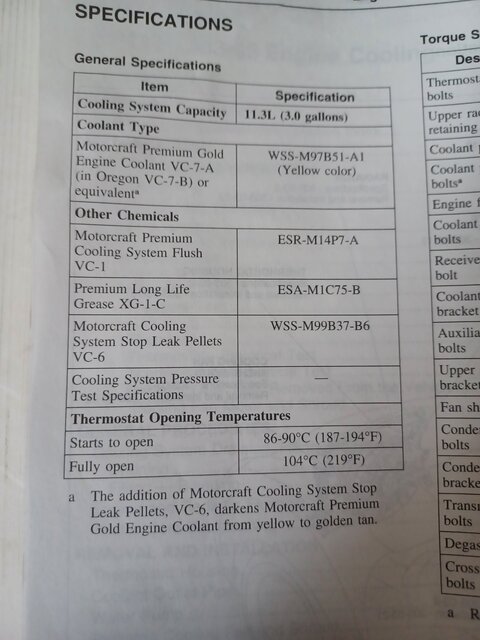Before you start adding
stop leak pellets, have the repair shop perform a pressure test of the cooling system. Here is how it's done:
1. Turn the engine OFF.
2. Remove the
cowl vent screen.
3.
WARNING: Never remove the pressure relief cap under any conditions while the engine is operating. Failure to follow these instructions can result in damage to the cooling system or engine and/or personal injury. To avoid having scalding hot coolant or steam blow out of the cooling system, never remove the pressure relief cap from a hot degas bottle. Wait until the engine has cooled, then wrap a thick cloth around the pressure relief cap and turn it slowly one turn (counterclockwise). Step back while the pressure is released from the cooling system. When certain all the pressure has been released, remove the pressure relief cap (still with a cloth).
Check the engine coolant level.
4. Connect the
Radiator/Heater Core Pressure Tester to the degas bottle nipple and overflow hose. Install a pressure test pump to the quick-connect fitting of the test adapter.
5.
NOTE: If the plunger of the pump is depressed too fast, an erroneous pressure reading will result.
Slowly depress the plunger of the pressure test pump until the pressure gauge reading stops increasing and note the highest pressure reading obtained.
6. If the pressure relief cap does not hold pressure, remove and wash the pressure relief cap in clean water to dislodge all foreign particles from the gaskets. Check the sealing surface in the filler neck.
7. If
8 - 9 kPa (13 psi) cannot be reached, carry out the pressure relief cap component test. If more than
12 kPa (18 psi) shows on the gauge, install a new pressure relief cap.
8.
CAUTION: If the pressure drops, check for leaks at the engine to heater core hoses, engine-to-
radiator hoses, coolant valve hose (if applicable),
oil cooler return tube gasket,
radiator and heater core or other system components and connections. Any leaks which are found must be corrected and the system rechecked.
Pressurize the engine cooling system as described in Step 4 (using a pressure relief cap that operates within the specified upper and lower pressure limits). Observe the gauge reading for approximately two minutes. Pressure should not drop during this time.
9. Release the system pressure by loosening the pressure relief cap. Check the engine coolant level and replenish, if necessary, with the correct engine coolant mixture.
doug7740
1955 Thunderbird Blue



